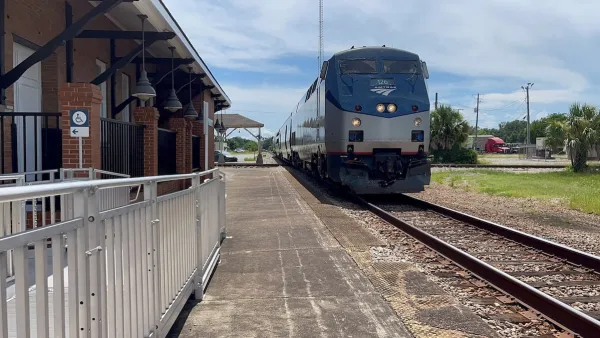Architect Thom Mayne and a team of UCLA architecture students have created the first floating house permitted in the U.S. as part of a mission to help flood-ravaged New Orleans.
From the press release: "Known as the FLOAT House, the structure is a new model for flood-safe, affordable and sustainable housing and is designed to securely float with rising water levels. The innovative house was built for actor Brad Pitt's Make It Right Foundation, which is helping with the rebuilding of New Orleans' Lower Ninth Ward, one of the neighborhoods hardest hit by Hurricane Katrina.
The concept for the FLOAT House emerged from research on the local flooding record, the social and cultural history of the city, and the ecology of the Mississippi Delta. In the event of flooding, the base of the house - reconceived as a chassis - acts as a raft, allowing the house to rise vertically on guide posts, securely floating up to 12 feet as water levels rise. While not designed for occupants to remain inside during a hurricane, the innovative structure aims to minimize catastrophic damage and preserve the homeowner's investment in their property. This approach also allows for the early return of occupants in the aftermath of a hurricane or flood."
FULL STORY: Architect Thom Mayne, UCLA students create floating house for New Orleans residents

Planetizen Federal Action Tracker
A weekly monitor of how Trump’s orders and actions are impacting planners and planning in America.

Maui's Vacation Rental Debate Turns Ugly
Verbal attacks, misinformation campaigns and fistfights plague a high-stakes debate to convert thousands of vacation rentals into long-term housing.

San Francisco Suspends Traffic Calming Amidst Record Deaths
Citing “a challenging fiscal landscape,” the city will cease the program on the heels of 42 traffic deaths, including 24 pedestrians.

Amtrak Rolls Out New Orleans to Alabama “Mardi Gras” Train
The new service will operate morning and evening departures between Mobile and New Orleans.

The Subversive Car-Free Guide to Trump's Great American Road Trip
Car-free ways to access Chicagoland’s best tourist attractions.

San Antonio and Austin are Fusing Into one Massive Megaregion
The region spanning the two central Texas cities is growing fast, posing challenges for local infrastructure and water supplies.
Urban Design for Planners 1: Software Tools
This six-course series explores essential urban design concepts using open source software and equips planners with the tools they need to participate fully in the urban design process.
Planning for Universal Design
Learn the tools for implementing Universal Design in planning regulations.
Heyer Gruel & Associates PA
JM Goldson LLC
Custer County Colorado
City of Camden Redevelopment Agency
City of Astoria
Transportation Research & Education Center (TREC) at Portland State University
Jefferson Parish Government
Camden Redevelopment Agency
City of Claremont





























